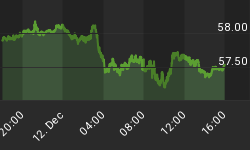
Macro's crowded one way street collided in a large pile-up Thursday, as traders hit the brakes and attempted a quick K turn, as Draghi seemingly underwhelmed participants expectations of magnanimous action. When the dust settled, the dollar index suffered its worst decline since March 18, 2009 (*the Fed's expanded QE announcement - Figures 6 & 7) and the euro ripped over 3 percent higher for the session.
"Every metric of the ECB's easing was less than expected by markets. The ECB cut the deposit rate by the minimum amount expected, extended the length of QE program by six months when the market was looking for 12 months and expanded the pool of assets available for purchase without increasing the size of monthly purchases." Jasper Lawler - CMC Markets
That said, those that chose to drive with the crowd in such conditions had largely ignored the hazard signs along the way over the past few weeks and months, that had indicated 1) the dollar was historically stretched, and 2) long positions in Treasuries were a dangerous place to speculate.
Moreover, perhaps Draghi understands the flaw in conventional wisdom today that seeks a weaker euro as the best remedy for what ails Europe. From our perspective, we would still argue that a broadly weaker US dollar would have the greatest efficacy in the long-term, as it could reflexively affect inflation expectations worldwide - most notably in emerging markets that the IMF estimates will account for more than 70 percent of global growth through the end of this decade.
Inflation, which has failed to show-up over the past few years, and which we believe is a real behavioral consequence of the Fed's painfully slow creep towards normalizing policy, is lying in wait. The question is - how quickly it will gather over the next few years. As shown below in Figure 9, we have been keeping an eye on the silver:gold ratio, which is showing a rare bullish momentum cross this month. We suspect precious metals investors that have received coal in their stockings over the past several years as disinflationary trends have continued with policy accommodations - will finally be on the right side of the market. Interestingly, the 2011 SPX analog (Figures 14 & 15) now dovetails with the miners and our old seasonal performance comparative with the banks from that year (Figure (13). Should the pattern continue, the replicating performance breakdown in the miners (Figure 11 & 12) over the past few years will follow a new line higher.
Headed into the November employment report Friday, long-term Treasuries - as expressed by iShares 20+ Year Treasury Bond ETF, is back sitting on support after experiencing its biggest decline since May. As outlined in our note a few weeks back (see Here), the window remains open for long-term yields to test overhead resistance coming into the much anticipated December Fed meeting.
Figure 1
![]() Larger Image
Larger Image
Figure 2
![]() Larger Image
Larger Image
Figure 3
![]() Larger Image
Larger Image
Figure 4
![]() Larger Image
Larger Image
Figure 5
![]() Larger Image
Larger Image
Figure 6
![]() Larger Image
Larger Image
Figure 7
![]() Larger Image
Larger Image
Figure 8
![]() Larger Image
Larger Image
Figure 9
![]() Larger Image
Larger Image
Figure 10
![]() Larger Image
Larger Image
Figure 11
![]() Larger Image
Larger Image
Figure 12
![]() Larger Image
Larger Image
Figure 13
![]() Larger Image
Larger Image
Figure 14
![]() Larger Image
Larger Image
Figure 15
![]() Larger Image
Larger Image
Figure 16
![]() Larger Image
Larger Image
Figure 17
![]() Larger Image
Larger Image
















